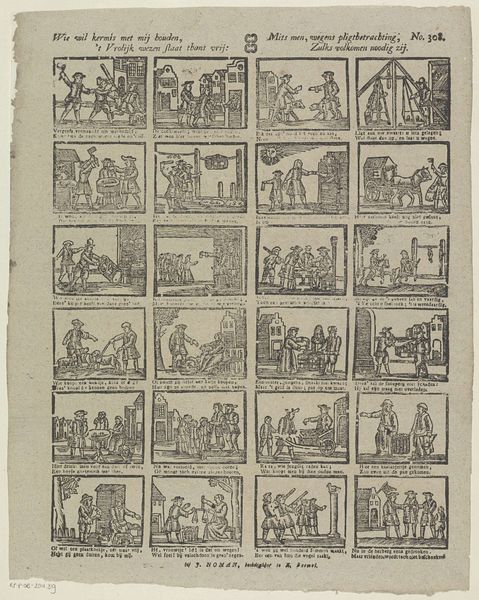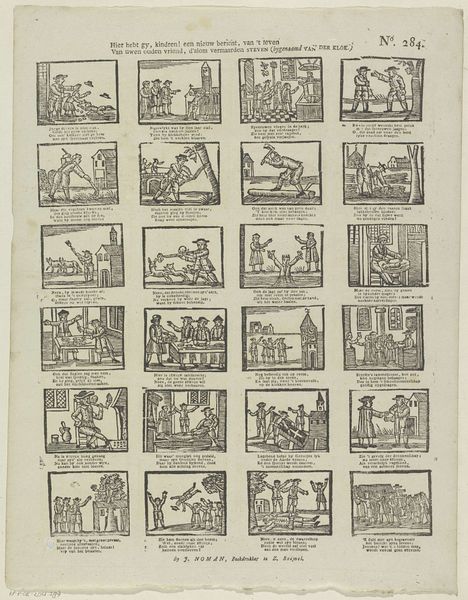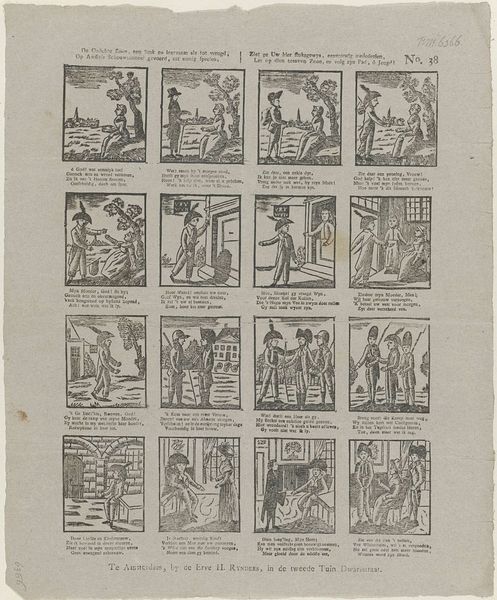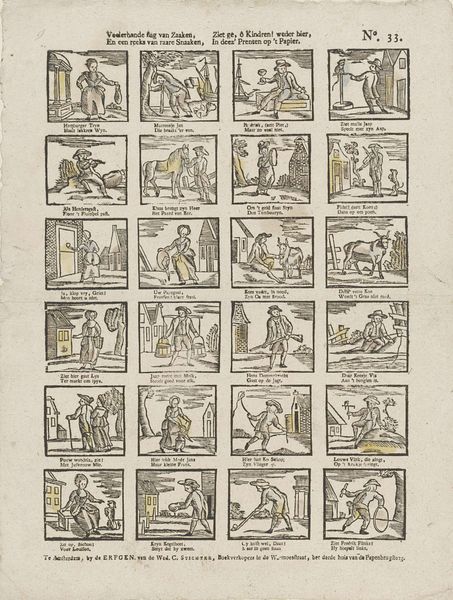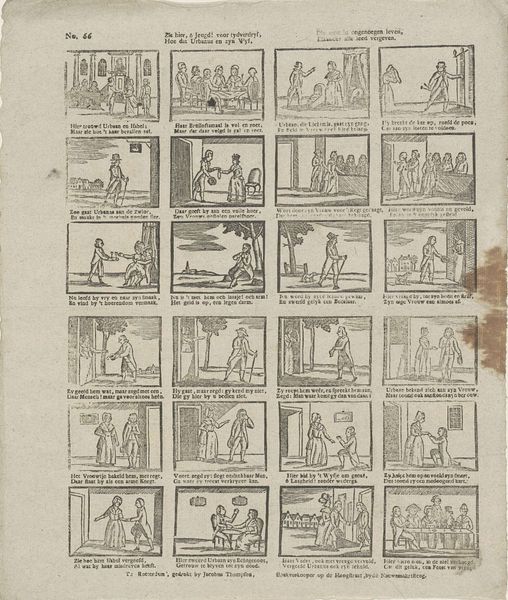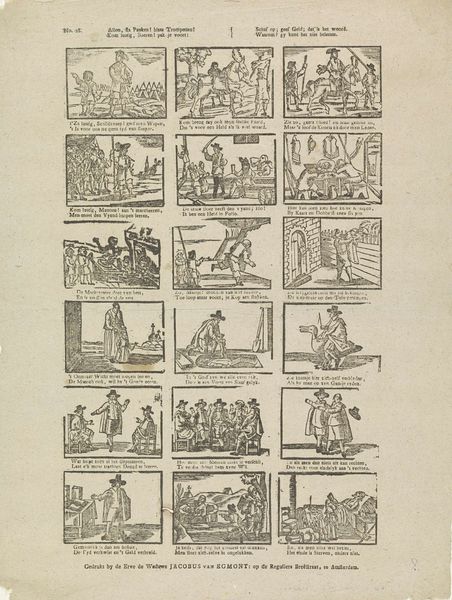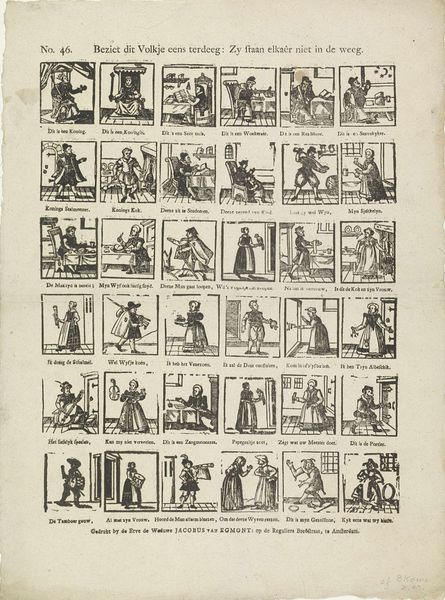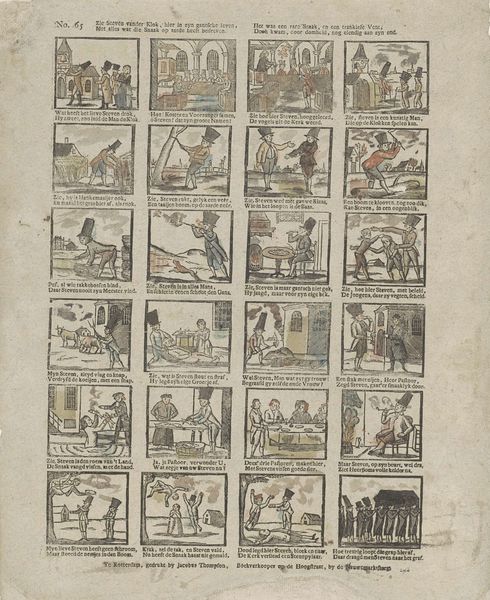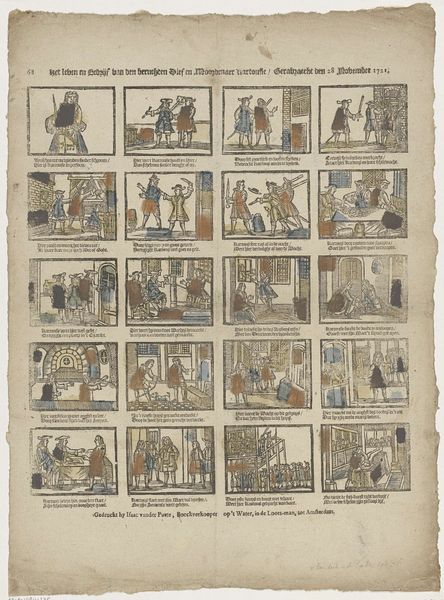
Komt, kindertjes! komt hier, wilt doctor Steven kyken, / Met zyn knecht Sprint in 't Veld, gy zag nooit zyns gelyken 1761 - 1804
0:00
0:00
hermanusnuman
Rijksmuseum
print, engraving
#
narrative-art
# print
#
comic
#
genre-painting
#
engraving
Dimensions: height 400 mm, width 307 mm
Copyright: Rijks Museum: Open Domain
Curator: This print, dating roughly from 1761 to 1804, is titled "Komt, kindertjes! Komt hier, wilt doctor Steven kyken, / Met zyn knecht Sprint in 't Veld, gy zag nooit zyns gelyken," which translates to “Come children! Come here, do you want to look at Doctor Steven, With his servant Sprint in 't Veld, you have never seen the like of him.” It resides here at the Rijksmuseum. What are your first thoughts? Editor: I’m immediately struck by its graphic quality. The grid of small scenes creates a sequential narrative that seems both simple and strangely captivating, though its raw linework suggests its materiality stems from mass production more than an individual’s mark making. Curator: Precisely. As an engraving, the artist, Hermanus Numan, worked with readily available tools and printing processes, catering to a wider audience rather than the elite. The scenes themselves are intriguing, seemingly illustrating a folk tale or moral lesson involving the Doctor Steven and his servant. Editor: I see a clear hierarchy being built through composition. The scenes themselves utilize fairly simplistic structures, but the way in which the central characters—the Doctor and his servant—are repeatedly centered establishes their thematic importance. I wonder about the emotional undercurrent – the slightly exaggerated gestures of figures seem cartoonish. Curator: That expressiveness certainly reflects its connection to popular storytelling traditions. The print functioned almost like a comic strip, intended to entertain and perhaps subtly educate the masses, using easily reproducible imagery accessible to most. The materiality reinforces the concept; the engraving allows it to have infinite impressions. Editor: I do find it quite remarkable how effectively Numan uses a relatively simple visual language to construct such an accessible world. The clarity of forms and line, despite the modest material constraints of printmaking, is noteworthy from a compositional perspective. And beyond its context, the grid format pushes toward the exploration of serialization as an art concept, similar to artists from later years. Curator: Indeed. By examining the materials and production process, we reveal the artwork’s role within its broader socio-economic context. This print underscores art’s function as not just aesthetic experience, but also as cultural artifact intertwined with distribution methods and audiences' values. Editor: Agreed, while accounting for the means and context through which it was made is key, recognizing and appreciating its inherent graphic strengths allows an immediate reading that emphasizes clarity and design—qualities vital when communicating a visual story effectively.
Comments
No comments
Be the first to comment and join the conversation on the ultimate creative platform.
